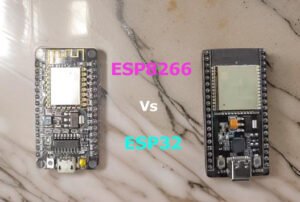VR Gaming Technology
Virtual Reality (VR) gaming technology is a rapidly advancing field that enables players to immerse themselves in a computer-generated 3D environment. With advances in hardware and software, players can interact with and explore a virtual world in a realistic way, making the gaming experience much more immersive. VR gaming technology is currently being used in gaming consoles, PCs, and mobile devices, allowing players to explore and enjoy a new level of realism. The technology also allows for more realistic graphics, greater depth of sound, and improved motion tracking, making the experience even more immersive. With VR gaming, gamers can explore virtual worlds and scenarios that take them to places they couldn’t possibly reach in the real world. This technology is sure to revolutionize the gaming industry, allowing players to truly experience the world of gaming in a whole new way.
Benefits of PCB Design for VR Controllers
PCB design is an invaluable tool when it comes to creating VR Gamepad Controllers. This technology provides a number of benefits to the process, such as reduced costs, increased reliability, and improved design flexibility. With PCB design, engineers can create a more efficient layout that can reduce the number of components required, thus lowering the overall cost. Additionally, electronics designed with PCBs are more reliable due to the improved quality of the components and reduced risk of errors. Finally, PCB design provides more flexibility in terms of the gamepad’s design, allowing for a greater range of options and customization. Overall, PCB design is an important step in the process of creating a VR Gamepad Controller and its benefits can not be overstated.
Steps for Designing a PCB for VR Controller
Designing a PCB for a VR Gamepad Controller requires careful consideration of the components and design elements used, as well as taking into account the user’s needs and the intended application. The following steps provide an overview of the process:
Research and decide on the components
This includes selecting the type of processor, memory, sensors, buttons, and other components that will be used in the gamepad controller.
Create a schematic diagram of the circuit
This includes drawing out the connections between each component and placing them on the board. It is important to consider the physical size and layout of the components when creating the schematic.
Simulate the circuit to ensure that it is functioning correctly
This can be done using simulation software or by manually testing the connections with a multimeter.
Create a PCB layout based on the schematic
This includes routing the traces, placing components on the board, and designing any additional features such as power planes or heat sinks.
Test the prototype board
To ensure that all connections are working correctly, we need to test the prototype board. This can be done through manual testing or through automated test equipment.
Create the production version of the board
If the prototype board is ok, then we can create the production version of the PCB. It includes any necessary components and features. This step involves creating a bill of materials, ordering components, and assembling the boards.
VR Game Controller Board Testing
Test the boards to ensure they are functioning correctly. This can be done with automated test equipment or by manually testing each board.
Design any additional features
In the end, you can design any additional features such as a protective casing or custom branding. This may involve working with a 3D printing or injection molding company to produce a physical product.
Development Case of VR Game Controller
There’re three major Manus VR Gloves: Manus Prime One, Manus Prime Xsens, Manus Prime Haptic.
Manus VR Gloves
Manus VR Gloves are a revolutionary new way to experience virtual reality. With these gloves, users can interact with the digital world as if it were their own. They provide a fully immersive experience that rivals most traditional VR systems. The gloves feature sensors which allow for incredibly precise movements and tracking, giving users a truly natural feeling of being in the virtual world. Furthermore, the gloves are designed to be comfortable for extended wear and are made of lightweight materials, making them ideal for long gaming sessions. Manus VR Gloves are an exciting new way to explore virtual reality and make it accessible to everyone.

Features
– Touch sensors: pressure sensors, capacitive sensors, bend sensors, etc.
– Motion sensors: accelerometers, gyroscopes, magnetometers, etc.
– Buttons: buttons to control menus and commands.
– Haptics: vibration motors to provide force feedback.
– Wireless connectivity: Bluetooth, Wi-Fi, etc.
Parameters
– Battery life: Up to 3 hours of active use and up to 10 hours of standby
– Connectivity: Bluetooth, USB-C and Wi-Fi
– Tracking: 6DOF (degree of freedom)
– Controls: Touch sensitive, trigger and thumbstick
– Weight: 2.05 lbs (930g)
– Compatibility: iOS, Android, PC, Mac, Oculus and SteamVR





